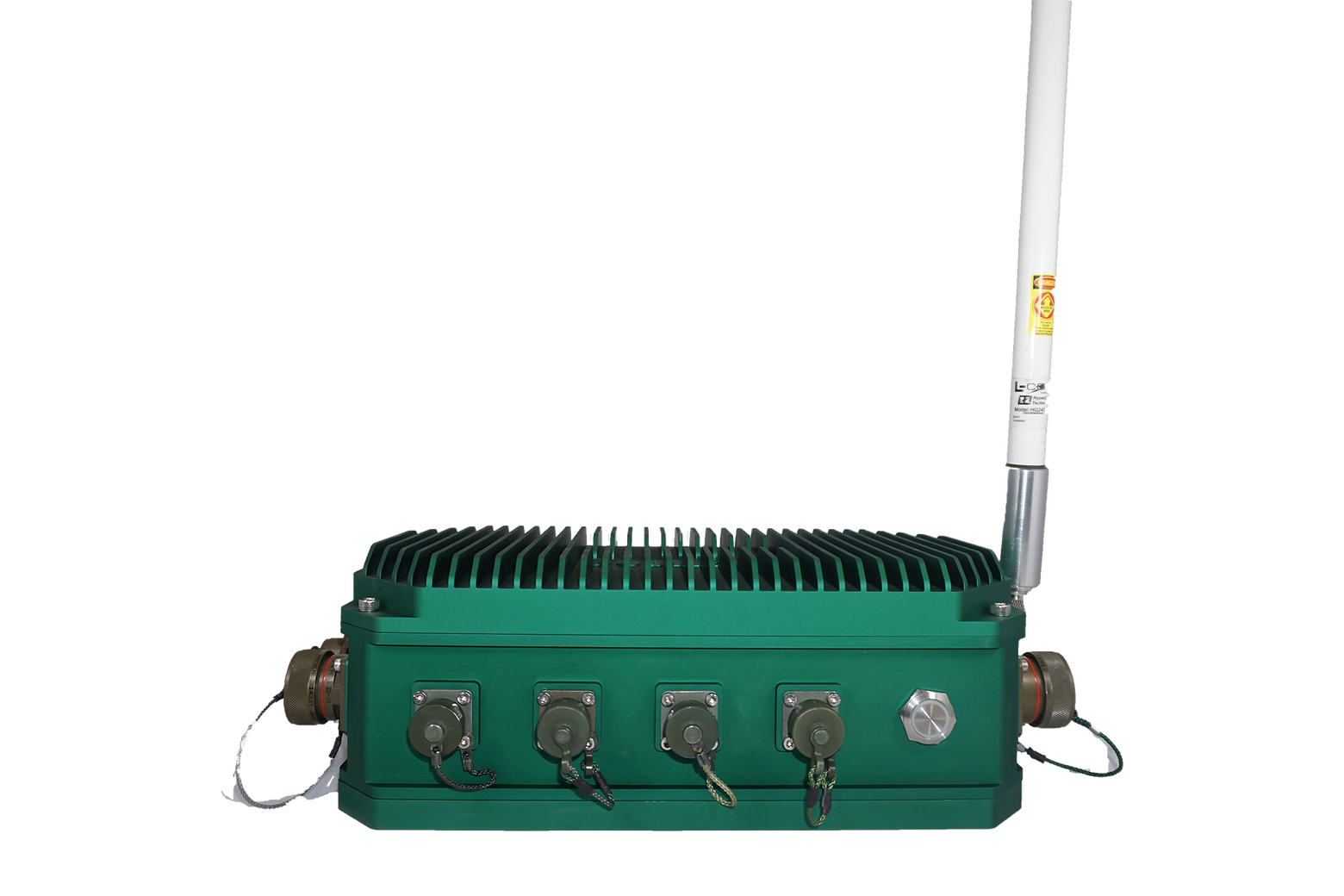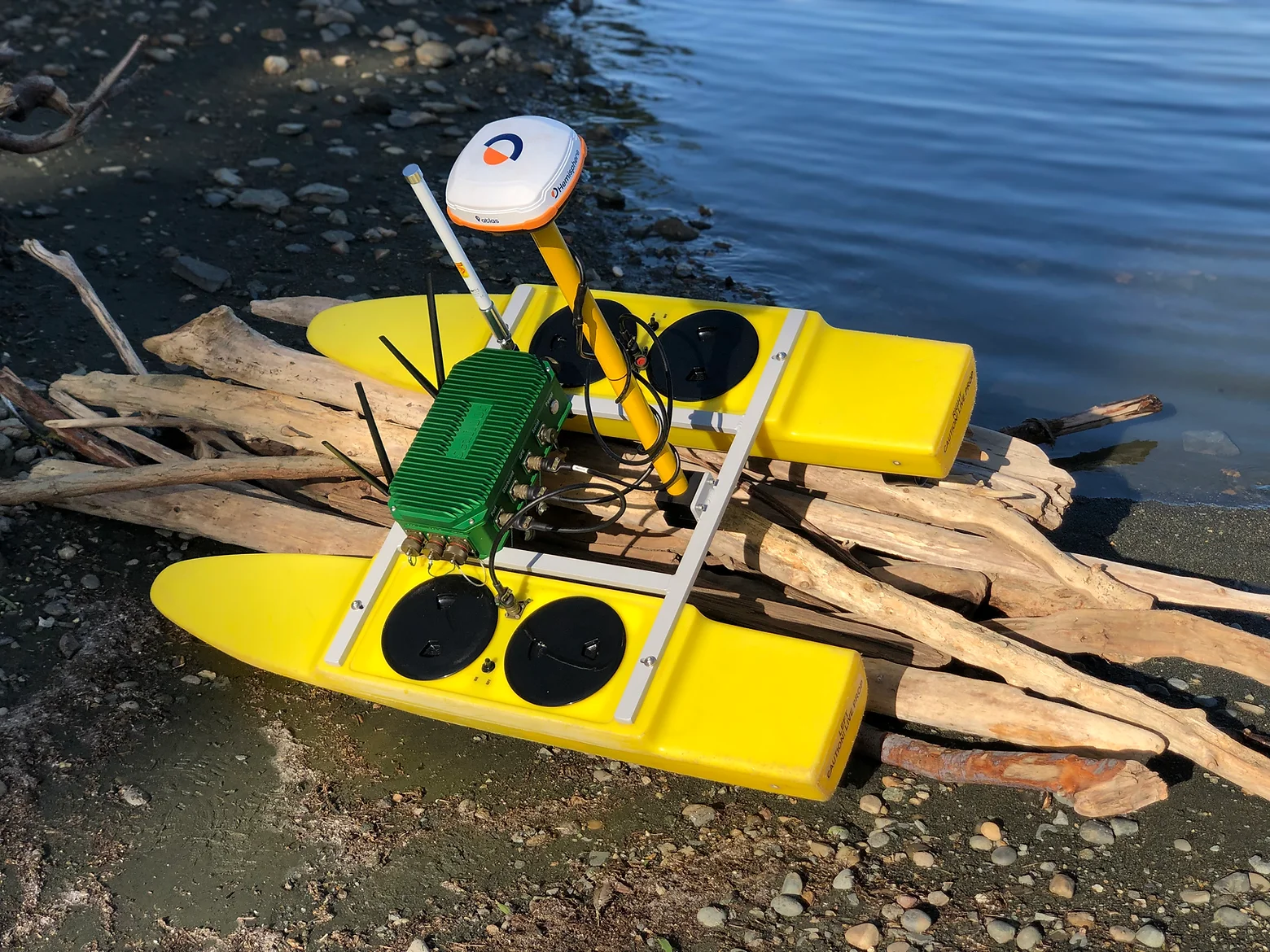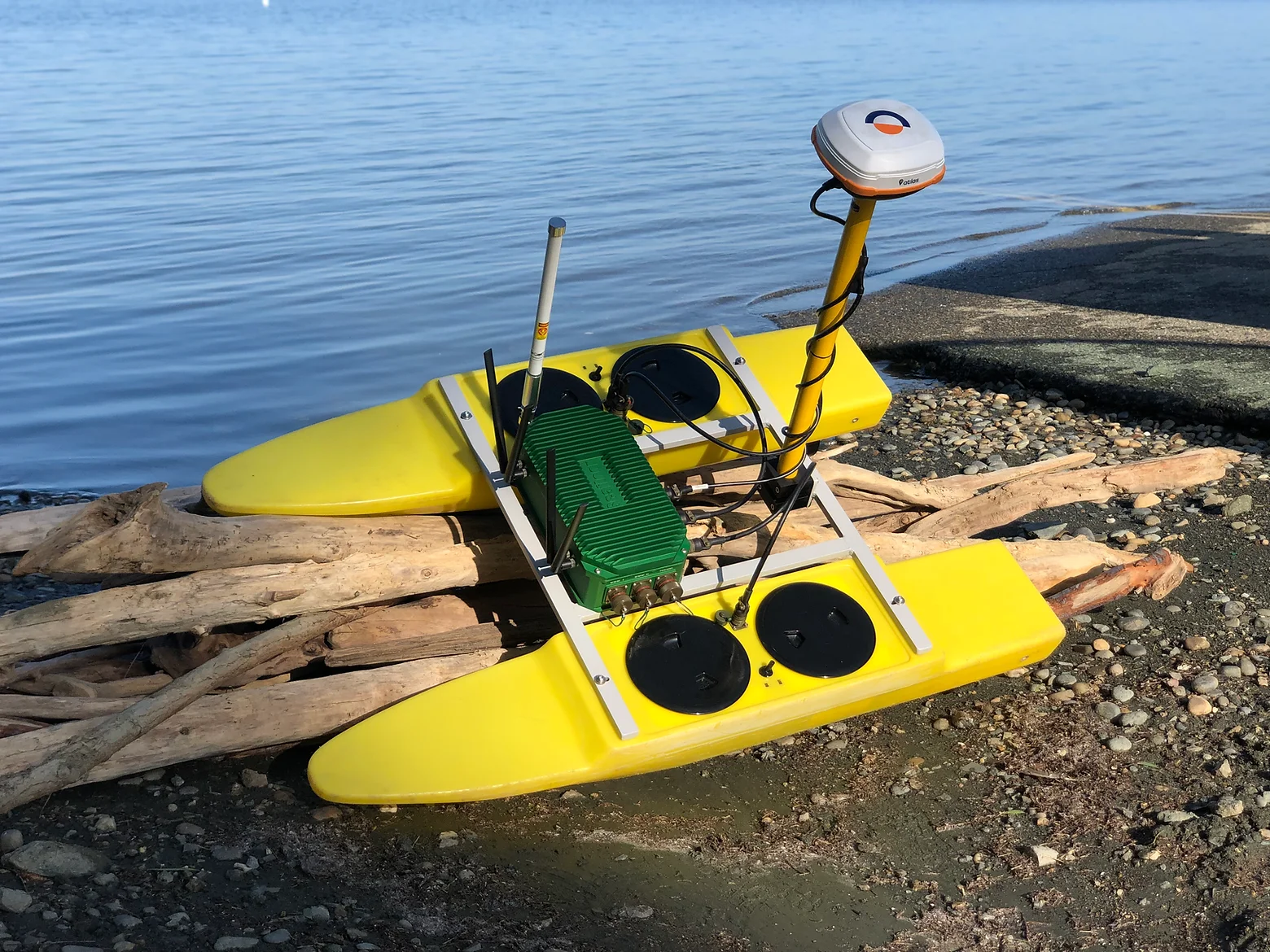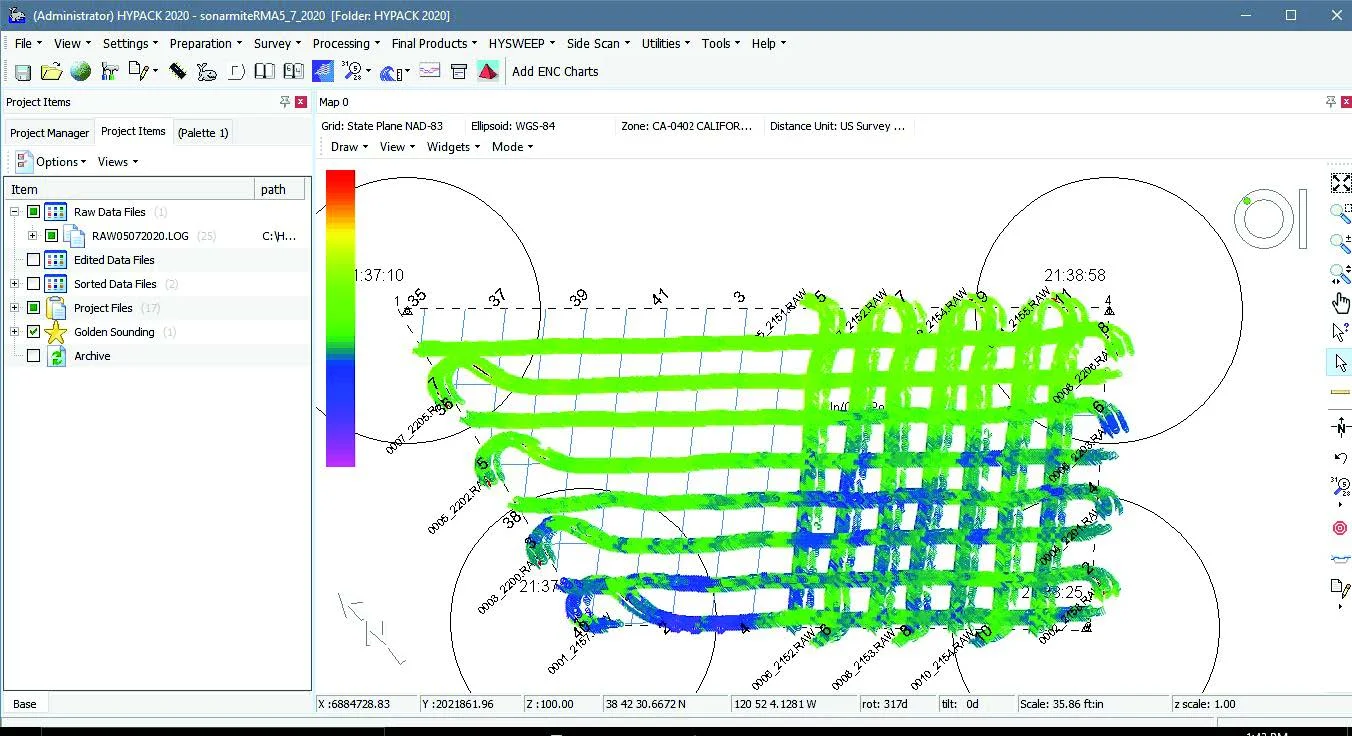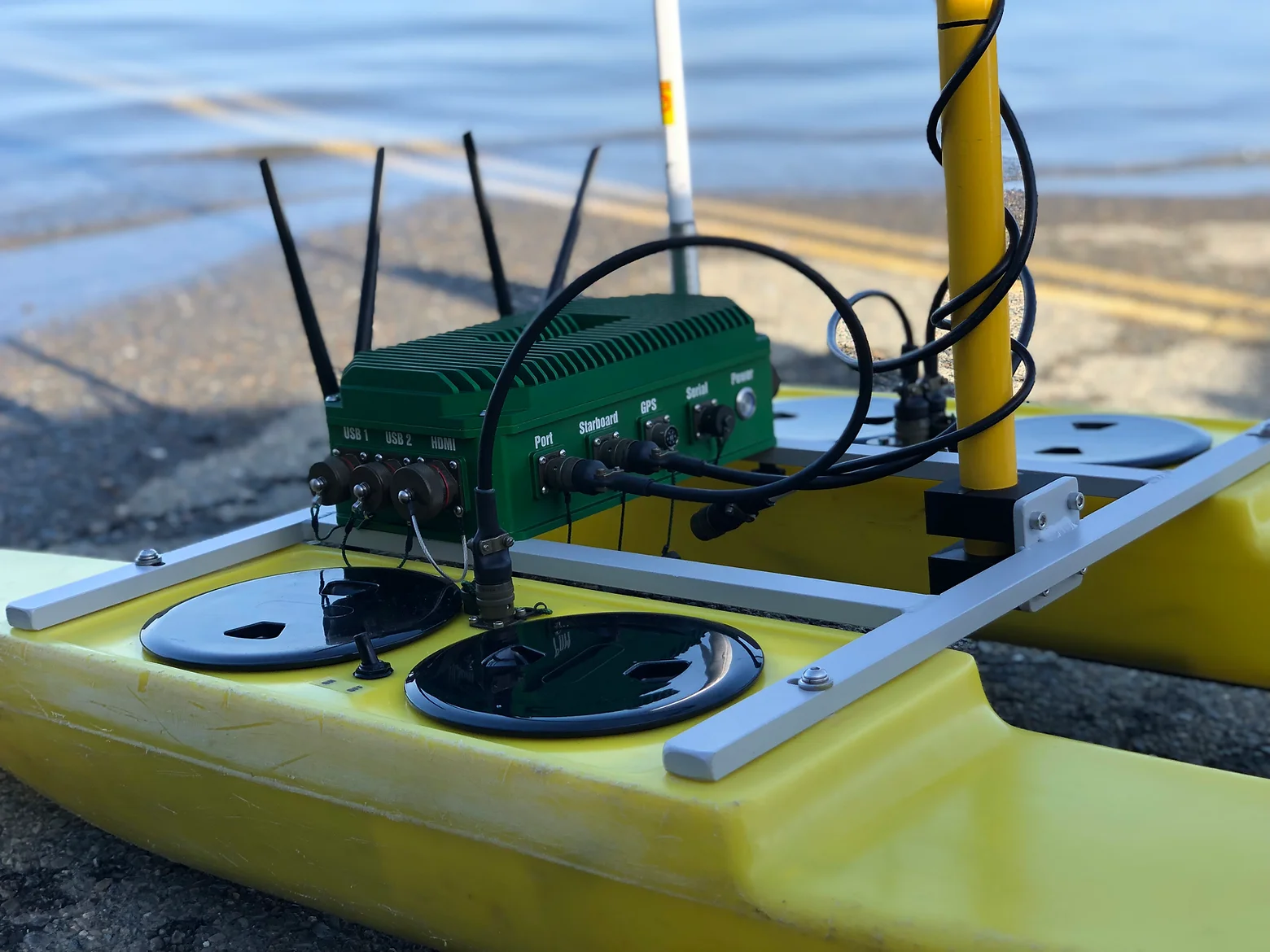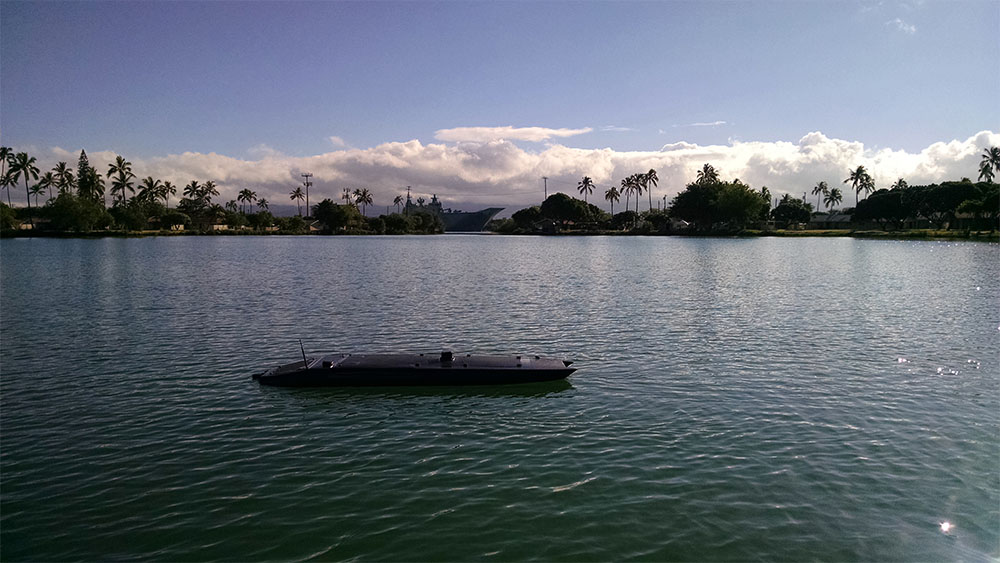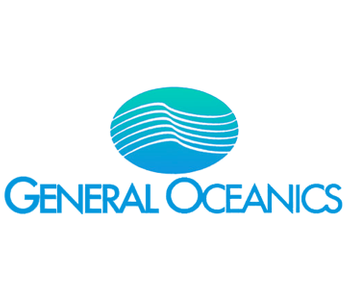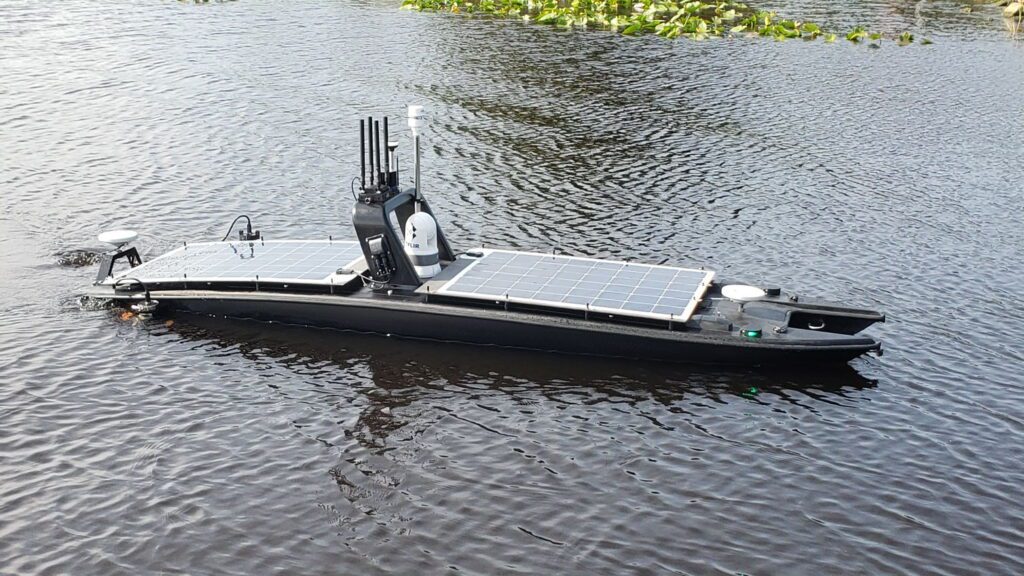BlueZone partners with over 50
world-leading original equipment
manufacturers and systems providers
AutoNav Plus™
AutoNav Plus™: Advanced Navigation and Data Logging for USVs
The AutoNav Plus™ combines the AutoNav™ control system, which enables USVs to navigate pre-programmed survey routes, with a long range communication control system and built-in computer for data logging and control of 3rd party applications. The system was designed to log GPS and echosounder data locally on the USV’s onboard computer, utilizing hydrographic survey software or other Windows-based data collection software.
Specifications:
- Serial Ports: 2 (GPS and Coms)
- Range: 2000m with telemetry
- Communications: 915Mhz (430Mhz EU)/ USB
- Environmental: IP 66
- Size: 11.5 x 3.5 x 6.5 in / 292 x 89 x 165 mm
- Weight: 3 lbs / 1.3 kg
Read more:
For more information on the AutoNav Plus™, contact the team at BlueZone.
Key Features
Up to 25-hour mission duration
Speeds up to 4.2 knots
Increased module payload capacity
Search and recovery
Hydrography
Deep sea mineral exploration
Marine & Fisheries research
Product Enquiry
Related Articles
Ahead of the Tide: BlueZone’s Landmark IndoPAC 2025 Showcase
Celebrating 25 Years of Sovereign Capability The Indo Pacific International Maritime Exposition stands as the region’s premier showcase for commercial maritime and naval defence innovation—bringing together leaders from defence,...
Read MorePartnering for Performance: BlueZone Supports Kraken Robotics in Advancing KATFISH Capability
BlueZone Group to become Kraken’s Australian Sales Representative, Enhancing Sovereign Support for Cutting-edge Synthetic Aperture Sonar Systems We are thrilled to announce BlueZone Group have signed an agreement...
Read MoreSeeByte and BlueZone Group Forge Strategic Alliance to Strengthen Australian Naval Capabilities
BlueZone Group is proud to announce our appointment as the official Australian representative for SeeByte, a UK-based leader in advanced maritime defence and uncrewed systems technology. This strategic partnership marks...
Read More
